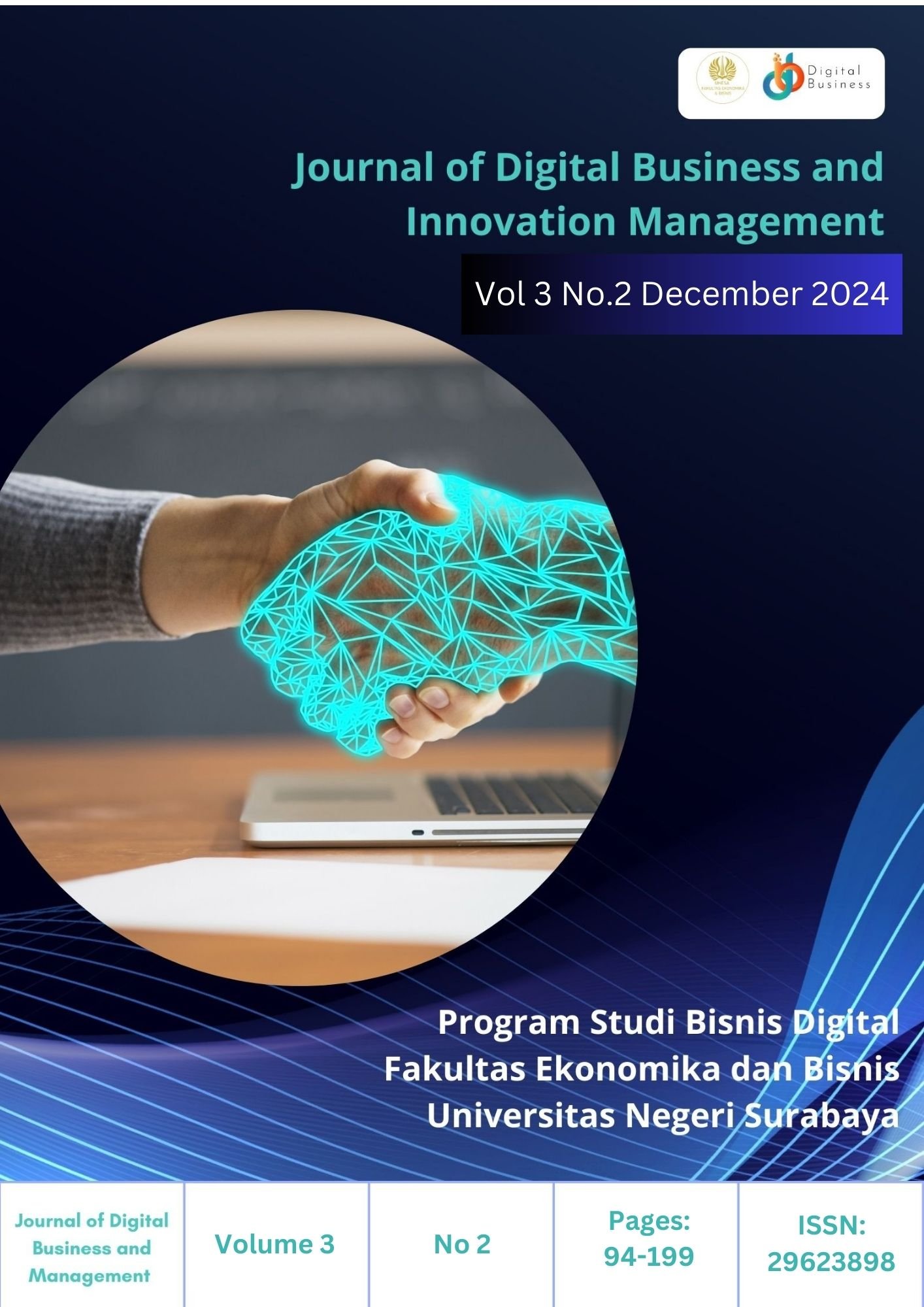Reexamining the Environmental Kuznets Curve in Selected N-11 Countries: The Role of Financial Markets, Institutional Quality, and Environmental Technology
Keywords:
Carbon dioxide emission, Environmental Kuznets Curve, Environmental Technology, Financial Market, Institutional QualityAbstract
Economic growth is crucial for emerging economies, yet the sustainability of this growth must consider its environmental impact. The Environmental Kuznets Curve (EKC) hypothesis suggests that while economic expansion initially worsens environmental degradation, it can ultimately lead to environmental improvements as income levels rise. This study reexamined the EKC hypothesis in a selected of countries from the Next Eleven (N-11) group. Using a random effects model regression, the analysis examined the effects of gross domestic products, financial market development, institutional quality, and environmental technology on CO₂ emissions. The findings supported the EKC hypothesis, indicating that economic growth initially increased environmental degradation but eventually contributed to improved environmental outcomes. Financial market development was associated with lower CO₂ emissions, suggesting that robust financial systems may promote eco-friendly investments. In contrast, environmental technology exhibited a positive effect on CO₂ emissions, potentially reflecting an early adoption stage were technology increases emissions. Institutional quality did not show a significant impact on CO₂ emissions. Several recommendations were provided balancing economic growth with environmental sustainability.
Keywords: Carbon dioxide emission, Environmental Kuznets Curve, Environmental Technology, Financial Market, Institutional Quality.
Downloads
References
Ali, W., Rahman, I. U., Zahid, M., Khan, M. A., & Kumail, T. (2020). Do technology and structural changes favour environment in Malaysia: an ARDL-based evidence for environmental Kuznets curve. Environment, Development and Sustainability, 22(8), 7927–7950. https://doi.org/10.1007/s10668-019-00554-7
Ben Amar, A. (2021). Economic growth and environment in the United Kingdom: robust evidence using more than 250 years data. Environmental Economics and Policy Studies, 23(4), 667–681. https://doi.org/10.1007/s10018-020-00300-8
Benitez, D. A., & Bisbey, J. (2021). Financing Low Carbon Transport Solutions In Developing Countries. https://hdl.handle.net/10986/36610
Čábelková, I., Smutka, L., Mareš, D., Ortikov, A., & Kontsevaya, S. (2023). Environmental protection or economic growth? The effects of preferences for individual freedoms. Frontiers in Environmental Science, 11. https://doi.org/10.3389/fenvs.2023.1129236
Darwili, A., & Schröder, E. (2023). On the Interpretation and Measurement of Technology-Adjusted Emissions Embodied in Trade. Environmental and Resource Economics, 84(1), 65–98. https://doi.org/10.1007/s10640-022-00725-7
Du, C., Zhang, Q., & Huang, D. (2023). Environmental protection subsidies, green technology innovation and environmental performance: Evidence from China’s heavy-polluting listed firms. PLOS ONE, 18(2), e0278629. https://doi.org/10.1371/journal.pone.0278629
Grossman, G. M., & Krueger, A. B. (1995). Economic Growth and the Environment. The Quarterly Journal of Economics, 110(2), 353–377. https://doi.org/10.2307/2118443
Gujarati, D., & Porter, D. (2004). Basic Econometrics. Mc.Graw Hill.
Haas, R., Wohlgemuth, N., & Huber, C. (2001). Financial incentives to promote renewable energy systems in European electricity markets: a survey. International Journal of Global Energy Issues, 15(1/2), 5. https://doi.org/10.1504/IJGEI.2001.000885
Hove, S., & Tursoy, T. (2019). An investigation of the environmental Kuznets curve in emerging economies. Journal of Cleaner Production, 236, 117628. https://doi.org/10.1016/j.jclepro.2019.117628
Hu, Y., & Jin, Y. (2023). Unraveling the influence of green bonds on environmental sustainability and paving the way for sustainable energy projects in green finance. Environmental Science and Pollution Research, 30(52), 113039–113054. https://doi.org/10.1007/s11356-023-30454-3
Huber, P. J. (1967, June). The behavior of maximum likelihood estimates under nonstandard conditions. In Proceedings of the fifth Berkeley symposium on mathematical statistics and probability (Vol. 1, No. 1, pp. 221-233).
Khan, H., & Khan, I. (2023). The effect of technological innovations, urbanization, and economic growth on environmental quality: does governance matter? Frontiers in Environmental Science, 11. https://doi.org/10.3389/fenvs.2023.1239288
Maneejuk, N., Ratchakom, S., Maneejuk, P., & Yamaka, W. (2020). Does the Environmental Kuznets Curve Exist? An International Study. Sustainability, 12(21), 9117. https://doi.org/10.3390/su12219117
Nguyễn, H. V., & Phan, T. T. (2023). Impact of economic growth, international trade, and FDI on sustainable development in developing countries. Environment, Development and Sustainability. https://doi.org/10.1007/s10668-023-04060-9
Puschmann, T., Hoffmann, C. H., & Khmarskyi, V. (2020). How Green FinTech Can Alleviate the Impact of Climate Change—The Case of Switzerland. Sustainability, 12(24), 10691. https://doi.org/10.3390/su122410691
Raihan, A. (2023). An overview of the energy segment of Indonesia: present situation, prospects, and forthcoming advancements in renewable energy technology. Journal of Technology Innovations and Energy, 2(3), 37–63. https://doi.org/10.56556/jtie.v2i3.599
Saqib, N., Abbas, S., Ozturk, I., Murshed, M., Tarczyńska-Łuniewska, M., Mahtab Alam, M., & Tarczyński, W. (2024). Leveraging environmental ICT for carbon neutrality: Analyzing the impact of financial development, renewable energy and human capital in top polluting economies. Gondwana Research, 126, 305–320. https://doi.org/10.1016/j.gr.2023.09.014
Sugiyono. (2015). Metode Penelitian dan Pengembangan Pendekatan Kualitatif, Kuantitatif, dan R&D. In Metode Penelitian dan Pengembangan Pendekatan Kualitatif, Kuantitatif, dan R&D.
Xu, L., & Solangi, Y. A. (2023). Evaluating the impact of green bonds on renewable energy investment to promote sustainable development in China. Journal of Renewable and Sustainable Energy, 15(5). https://doi.org/10.1063/5.0161387
Zhang, Z., Bashir, T., Song, J., Aziz, S., Yahya, G., Bashir, S., & Zamir, A. (2022). The effects of Environmental Kuznets Curve toward environmental pollution, energy consumption on sustainable economic growth through moderate role of technological innovation. Environmental Science and Pollution Research, 29(1), 405–416. https://doi.org/10.1007/s11356-021-16956-y

Downloads
Published
How to Cite
Issue
Section
 Abstract views: 75
,
Abstract views: 75
, PDF Downloads: 71
PDF Downloads: 71






